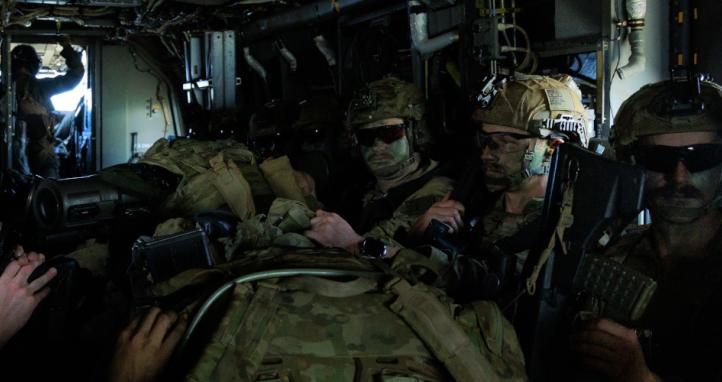A high level of physical fitness is at the core of being a soldier. It is well known that fitness leads to better endurance and overall performance during difficult work on deployments and training exercises and is particularly important for combat roles.
As an Army Reserve platoon sergeant I have noticed anecdotally that the standard of fitness for candidates, recruits, and soldiers has declined over the years. I contend that there are also now more young soldiers who are overweight than when I joined. From what I observe, more soldiers struggle to pass fitness tests and appear more prone to injuries and issues such as heat illness. Unlike full-time Army members who can participate in regular physical training (PT) sessions, there is no control on physical fitness regimes and fitness levels of candidates, and very little control over Reservists due to the limited training time available.
When I first enlisted into Army in the early 1990s, the Basic Fitness Assessment (BFA) was a 5 km run, push ups, sit ups and pull ups – which we were required to be passed every six months. We also completed a pack march each year. This changed to the current 2.4 km run, push ups and sit ups. Several years later, the frequency between passing the BFA was reduced to once every 12 months. I believe this had led to a reduction in overall fitness levels.
In relation to candidates trying to join the ADF and attempting their Pre-enlistment Fitness Assessment’s (PFA) many present unfit, some having trained very little, and more and more are overweight. At times they need to return for multiple attempts to pass their PFA. PFAs are different for each service area of Defence and are set at a low level, so it is a concern that our young people seem to struggle passing what are very basic fitness tests. This general lowering of fitness levels does not bode well for our nation, or for Defence.
National statistics on fitness
Studies conducted in recent years show an overall lowering of fitness levels in our community. According to the Australian Institute of Health and Welfare (AIHW), for the age group 18-24 years, 41% of males and 48% of females have insufficient physical activity when surveyed in 2017/18[1].
ABS data from the 2020/21 National Health Survey found that only 34% of 18-24 year old males and females met physical activity guidelines and recommendations, down from 52% in the 2016 data. The type of activity at work on a typical workday was also surveyed which found 24% of 18-24 year olds mostly sat down at work[2]. This data shows that sedentary behaviour and physical inactivity seems to be the current norm.
According to the Department of Health and Aged Care, sedentary behaviour is classed as being inactive, either sitting or lying down for long periods. Australians appear to spend an inordinate amount of time being inactive at school, work, travelling, or when relaxing[3]. A significant amount of sedentary behaviour involves screen time, which includes:
- working or doing homework on a computer
- playing video games
- scrolling social media
- watching movies
According to the 2018 AIHW report ‘Physical activity across the life stages’, around 4 in 10 adults aged between 18–64 (37%) reported that not enough time or too many other commitments were the main barriers to participating in sport or recreational physical activities[4].
Pre-Military fitness programs
The overall deleterious levels of fitness and physical activity in the community, particularly in the younger age groups, will make recruiting new soldiers more difficult.
The US Centre for Disease Control and Prevention ‘Unfit to serve’ document states that among young adults who meet weight requirements to enlist, only 3 in 4 report physical activity levels that prepare them for challenges in military basic training[5].
In 2022, the US Army announced that it was commencing a ‘Future Soldier Preparatory Course’ pilot program to help America’s youth overcome academic and physical fitness barriers to service so they can ‘earn the opportunity’ to join the Army. The candidates can be in the program for a maximum of 90 days, with opportunities every three weeks to leave the program and move to basic training if they meet or exceed the Army’s desired accession standards[6].
The ADF
To assist candidates in increasing their fitness, the ADF developed the ‘ADF Active App’, which has exercise programs and the relevant PFA required to be passed. It is a very good tool; however, it does not guarantee ADF candidates actually follow it to get to the required standard of fitness.
ADF candidates need to complete the PFA which is the minimum standard for entry, and this differs for each Service within defence and job roles. A PFA needs to be passed 6 weeks prior to their enlistment day. There is also a minimum Body Mass Index (BMI) that needs to be met. To enlist, a candidate needs a BMI between 18.5 and 32.9, depending on their intended role[7].
The ADF also runs the Army Pre-Conditioning Program (APCP) which goes for 7 weeks at the Army Recruit Training Centre at Kapooka. This program aims at assisting recruits to prepare for their Initial Military Training (IMT). The program includes a fitness regime that includes aerobic conditioning, circuits, strength and endurance workouts, as well as military skills and adventure training. If passed this allows recruits to enter at week 3 of IMT[8].
Conclusion
The health and fitness levels of our current younger generation appear to be at low levels which can and will affect organisations such as Defence. More thought, discussion, analysis, and programs on a national level need to be implemented to fix this issue. The ADF can’t solve the fitness and lack of physical activity issue in the community, but it can identify additional programs and incentives to improve the level of fitness in candidates and serving soldiers.










Once in Defence, it is up to the unit to bring members fitness levels up to the required standard, this is not always achievable.